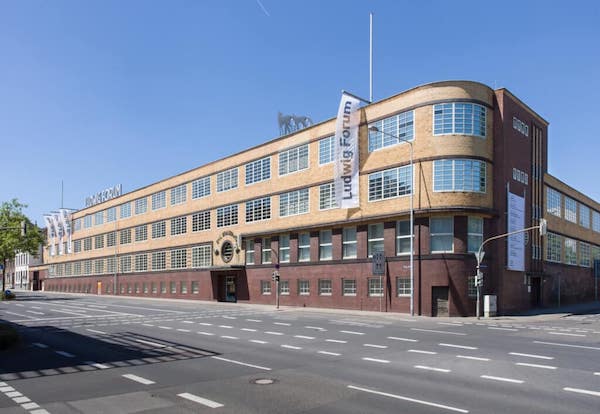
“After Modernism: An Exploration of Curatorial Practice”

Exploring “After Modernism”: A Peek into the Neumann Family Collection
PHILADELPHIA — Tucked within the stately halls of the University of Pennsylvania’s Arthur Ross Gallery, art lovers can now experience a survey as personal as it is encyclopedic. The exhibition “After Modernism: Selections from the Neumann Family Collection” presents 56 vibrant, enigmatic, and thought-provoking works, culled from one of America’s most eclectic collections of modern and contemporary art. Curated by Gwendolyn DuBois Shaw in collaboration with her University of Pennsylvania students, the show invites viewers to explore both the aesthetic narrative of the 20th and 21st centuries and the legacy of a remarkable art-collecting dynasty.
The Neumann Family Legacy
Spanning four generations and nearly 3,000 works, the Neumann Family Collection is a living archive of 20th- and 21st-century artistic innovation. It began in 1948 with Morton and Rose Neumann, who invested early in modern art icons like Pablo Picasso and Henri Matisse. Their son, Hubert Neumann, inherited both the collection and a voracious appetite for discovering new voices in the art world. His aim? To create a repository where established masters and emerging talents co-exist unfettered by institutional hierarchies.
This democratic ethos underpins “After Modernism,” reaffirming Hubert’s view that art should be dynamic, cross-generational, and immersive. A VR tour available at the gallery entrance even digitally transports visitors into his Eastside Manhattan townhouse—a museum-like space arranged with a near-overwhelming density of works, a style scholars might describe as horror vacui.
Unpacking the Exhibition
“After Modernism” is not organized chronologically or by artistic movement. Instead, it embraces visual rhymes, juxtapositions, and thematic flows. One of the first works to greet visitors is Joseph Beuys’s iconic 1971 felt suit—a somber, sculptural self-portrait that sets a contemplative tone. Just feet away, Xavier Veilhan’s “Le Gisant” (1994), a vividly contemporary take on medieval tomb sculpture, anchors the floor with a weighty visual silence. Veilhan’s supine figure reverberates thematically with Tom Sanford’s “Dead Michael Jackson” (2009), which renders the late pop icon in the pose of a saint, echoing Hans Holbein’s “The Body of the Dead Christ in the Tomb.”
Elsewhere, subtle details create unspoken conversations between works. Audrey Flack’s hyper-realistic vanity scene “Chanel” (1974) finds resonance with the reflective surfaces in Richard Estes’s “Escalator” (1971) and the futuristic glow of Michael van den Besselaar’s “The Time Machine Series #1” (2007). A room affectionately dubbed “The Elbow Room”—a nod to the Barnes Foundation’s similar installations—showcases bent-limb motifs as seen in Paul Klee’s “Harlequin” (1923) and Hannah Lupton Reinhard’s “Lost Angel” (2023).
Educational Integration & Curatorial Collaborations
This exhibition is as much about process and pedagogy as it is about visual experience. The students of the University of Pennsylvania’s Art History department did more than observe—they helped shape the show. Under the mentorship of Gwendolyn DuBois Shaw and co-teacher Peter Decherney, students contributed research, drafted wall labels (which they signed), and actively engaged with Neumann during the installation phase.
This learning-by-doing model positions “After Modernism” not only as a display of treasured artworks but as a pedagogical platform—an embodiment of Neumann’s own admiration for Albert Barnes’s approach to teaching through art. By empowering undergraduates to think like curators, the show breaks down elitist barriers, turning the gallery into a space of shared discovery and intellectual risk-taking.
Why the Arthur Ross Gallery?
Hubert Neumann has long been cautious of major museums, wary that their curatorial interest may have ulterior motives—namely, securing gifts from private collections. This skepticism harks back to the collection’s historic 1980 exhibition at the National Gallery of Art and the Art Institute of Chicago. Rather than feeding the machinery of institutional acquisition, Neumann has opted for independence and authenticity.
The Ross Gallery, recently renovated and housed within a university he graduated from (Penn’s Wharton School), offered the perfect alternative. It provided both intimacy and the latitude to experiment—a one-room kunsthalle where expressive curation could flourish free of bureaucracy. Moreover, the collaborative spirit at Penn, especially Shaw’s leadership and past student visits to Neumann’s home, helped solidify the partnership.
Artists Featured
The 56 dazzling works showcased span genres, movements, and materials. Alongside early modernist icons like Hannah Höch and Man Ray, the exhibition celebrates post